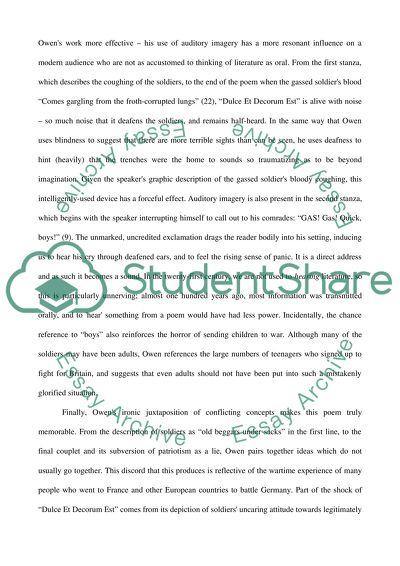Cite this document
(“The Sensory Imagery of Dulce Et Decorum Est by Wilfred Owen's Research Paper”, n.d.)
The Sensory Imagery of Dulce Et Decorum Est by Wilfred Owen's Research Paper. Retrieved from https://studentshare.org/literature/1420260-analytical-essay
The Sensory Imagery of Dulce Et Decorum Est by Wilfred Owen's Research Paper. Retrieved from https://studentshare.org/literature/1420260-analytical-essay
(The Sensory Imagery of Dulce Et Decorum Est by Wilfred Owen'S Research Paper)
The Sensory Imagery of Dulce Et Decorum Est by Wilfred Owen'S Research Paper. https://studentshare.org/literature/1420260-analytical-essay.
The Sensory Imagery of Dulce Et Decorum Est by Wilfred Owen'S Research Paper. https://studentshare.org/literature/1420260-analytical-essay.
“The Sensory Imagery of Dulce Et Decorum Est by Wilfred Owen'S Research Paper”, n.d. https://studentshare.org/literature/1420260-analytical-essay.


